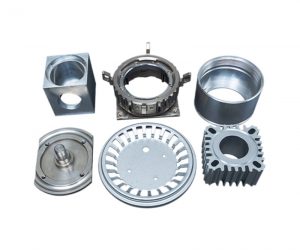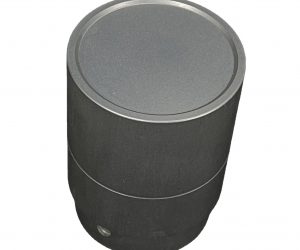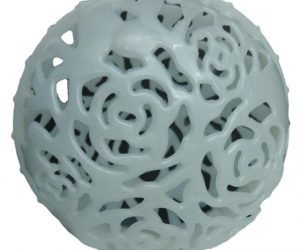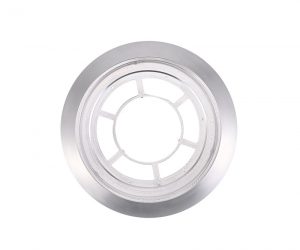In the labyrinthine world of colossal polymeric gears, a nuanced understanding transcends mere categorization. We delve beyond the superficial, exploring the intricate interplay of material science, mechanical engineering, and the often-overlooked implications of scale in the realm of large-format plastic gearing. This isn't a simple taxonomy; it's an exploration of the unforeseen consequences and emergent properties arising from the marriage of polymer chemistry and massive mechanical systems.
The typology of plastic gears extends far beyond the simplistic division into spur, helical, and worm configurations. Consider the subtle variations in tooth profile, the impact of differing moduli, and the often-ignored influence of manufacturing tolerances on the long-term performance and failure modes of these systems. The seemingly straightforward spur gear, for instance, exhibits a complex stress distribution under load, particularly at the root of the tooth, a critical factor in determining fatigue life and susceptibility to catastrophic failure in large-scale applications. Helical gears, while offering smoother operation and increased load-bearing capacity, introduce axial thrust, a factor demanding careful consideration in the design of the supporting infrastructure.
The selection of polymer matrix isn't a matter of simple material properties; it's a complex optimization problem. While nylon, polycarbonate, and polyester represent common choices, their suitability is highly dependent on the specific application parameters. Factors such as operating temperature, humidity, chemical exposure, and the anticipated load profile must be meticulously considered. Furthermore, the introduction of fillers, reinforcements (such as glass fibers or carbon nanotubes), and the utilization of advanced polymer blends dramatically alter the mechanical properties, introducing both opportunities and challenges. The pursuit of optimal material selection necessitates a sophisticated understanding of polymer rheology and the intricate relationship between molecular structure and macroscopic mechanical behavior.
The significance of scale in large plastic gears cannot be overstated. The transition from miniature components to massive systems introduces non-linear effects, amplifying the impact of seemingly minor design flaws. Resonance frequencies, previously negligible, become dominant factors, demanding careful consideration of vibration damping and the potential for catastrophic failure due to resonance-induced fatigue. Furthermore, the sheer weight of these components necessitates robust support structures and precise alignment mechanisms, adding significant complexity to the overall system design.
Finally, the ubiquity of plastic gears extends far beyond the mundane. Their application in high-performance automotive transmissions, sophisticated aerospace actuators, and life-critical medical devices underscores the critical role they play in modern technology. The precision motion control and efficient power transmission they provide are not merely functional advantages; they are often essential for the proper functioning of complex systems. The future of large-format plastic gears lies not in incremental improvements, but in the exploration of novel materials, advanced manufacturing techniques, and a deeper understanding of the complex interplay of forces and stresses within these often-overlooked giants of the mechanical world.
The Colossus of Gears: An Exploration into the Realm of Large-Scale Plastic Gear Technology
The ubiquitous nature of plastic gears, their silent reign across countless industrial landscapes, often obscures the sheer scale and complexity achievable within this seemingly humble domain. While small-scale plastic gears are commonplace, the engineering challenges and nuanced material considerations inherent in the design and manufacture of large plastic gears are significantly more profound. This discourse delves into the intricacies of these colossal components, examining their construction, material selection, and the often-unforeseen applications that demand their robust performance.
Beyond the Microcosm: The Mechanics of Gigantic Plastic Gears
The simplistic notion of a "driving gear" and "driven gear" collapses under the weight of scale. In large-scale systems, the interaction between these components transcends simple rotational transfer; it becomes a complex interplay of torque, inertia, and potentially catastrophic resonance. The larger gear, far from a mere driver, acts as a pivotal nexus of power distribution, demanding meticulous design to mitigate stress concentrations and prevent catastrophic failure under immense loads. The sheer size introduces inherent challenges: material homogeneity, dimensional stability across extreme temperatures, and the potential for unforeseen warping under operational stress.
Taxonomy of Titans: Classifying Large-Scale Plastic Gear Configurations
The familiar classifications of spur, helical, bevel, and worm gears remain relevant, but their application at scale necessitates a deeper understanding of their limitations and inherent weaknesses.
- Spur Gears: While seemingly straightforward, the sheer length of teeth in large spur gears introduces significant bending stresses, demanding advanced material selection and potentially intricate tooth profiling to optimize load distribution and prevent premature failure. The inherent limitations in noise reduction become amplified at scale, necessitating sophisticated noise damping strategies.
- Helical Gears: The helical geometry, while offering improved load-bearing capacity and reduced noise, introduces axial thrust forces that must be carefully managed in large-scale systems. The design must account for thrust bearings and potentially complex shaft configurations to accommodate these forces. Manufacturing tolerances become exponentially critical, impacting meshing accuracy and overall efficiency.
- Bevel Gears: The conical geometry of bevel gears, already complex in smaller applications, presents significant challenges in manufacturing and assembly at scale. Maintaining precise alignment and ensuring uniform contact across the entire gear face becomes paramount, demanding advanced machining techniques and rigorous quality control.
- Worm Gears: The high gear ratios achievable with worm gears are highly desirable in large-scale systems, but the inherent friction and heat generation must be carefully considered. Effective lubrication and thermal management become critical to prevent premature wear and potential seizure. The self-locking characteristic, while beneficial, can also present challenges during operation, requiring careful consideration of braking and safety mechanisms.
Material Selection: A Balancing Act Between Strength, Durability, and Cost
The selection of materials for large plastic gears is not merely a matter of choosing a suitable polymer; it's a complex optimization problem balancing mechanical properties, chemical resistance, cost-effectiveness, and long-term operational reliability. The following materials, while commonly used, require careful consideration of their limitations at scale:
- Nylon: While offering excellent wear resistance and chemical stability, the inherent creep characteristics of nylon become more pronounced under sustained high loads, demanding careful consideration of operational stress and temperature.
- Acetal (Delrin): The dimensional stability of acetal is a significant advantage, but its susceptibility to stress cracking under cyclical loading necessitates rigorous design analysis and potentially the incorporation of stress-relieving features.
- Polycarbonate: The impact resistance of polycarbonate is undeniably attractive, but its lower tensile strength compared to other materials requires careful design to mitigate potential failures under high loads.
- Polyethylene: The low friction and chemical resistance of polyethylene are valuable assets, but its relatively low strength and susceptibility to creep limit its applicability in high-stress, large-scale gear applications. Reinforced polyethylene composites may offer a viable alternative, but careful consideration of the reinforcement material and its interaction with the polymer matrix is crucial.
The design and implementation of large-scale plastic gears represent a significant engineering challenge, demanding a deep understanding of material science, mechanical design principles, and manufacturing limitations. The considerations outlined above merely scratch the surface of this complex field, highlighting the intricate interplay of factors that determine the success or failure of these industrial behemoths.
Exploring Plastic Gear Applications
Big plastic gears find extensive use in numerous industries and applications. Some notable examples include:
- Automotive transmissions and power steering systems
- Industrial machinery and automation
- Robotics and mechatronics
- Medical equipment and devices
- Printing and packaging machinery
- Aerospace and defense systems
These applications showcase the versatility and reliability of big plastic gears, making them a preferred choice in various industries.
Conclusion
big plastic gears play a crucial role in transmitting power and facilitating motion in a wide range of applications. Understanding the larger gear's significance, exploring different types of plastic gears, and selecting the appropriate material for optimal performance is essential. By harnessing the benefits of plastic gears, industries can achieve cost-effective solutions without compromising on reliability and efficiency.
6. FAQs
6.1 What are the different types of plastic gears?
The different types of plastic gears include spur gears, helical gears, bevel gears, and worm gears. Each type has unique tooth profiles and is suitable for specific applications.
Plastic gears are toothed wheels made of engineering plastics that work with other gears to transmit power or motion. They have some advantages over metal gears, such as being lightweight, rust-proof, low-cost, and able to operate without lubrication. However, they also have some drawbacks, such as lower strength, higher thermal expansion, and lower stiffness.
There are many types of plastic gears, depending on the shape, arrangement, and material of the teeth and the hub. Some common types are:
- Parallel axis gears: These gears have two axes that are parallel to each other. They can be spur, helical, or internal gears. They can produce high torque and power when used with helical gears.
- Non-parallel axis gears: These gears have two axes that are not parallel to each other. They can be bevel, spiral bevel, or hypoid gears. They can change the direction of rotation and the speed ratio.
- Plastic gears with metal hubs: These gears have plastic teeth and metal hubs that are fused or fixed together. The metal hubs provide more strength and stability for the plastic teeth. The hubs can be made of steel or stainless steel.
- Plastic gears with different materials: These gears use different engineering plastics for different applications. Some common materials are polyacetal (POM), MC nylon, polyurethane, polycarbonate, and polyphenylene sulfide. Some materials can be reinforced with glass fiber to improve their properties.
6.2 What plastic is best for gears?
The choice of plastic for gears depends on the specific requirements of the application. Some commonly used plastics for gears are nylon, acetal, polycarbonate, and polyethylene. Each material offers unique properties such as wear resistance, low friction, strength, and chemical resistance, which makes them suitable for different gear applications.
The choice of the best plastic for gears depends on the specific application and the requirements of the gear system. Several plastic materials are commonly used for gears due to their unique properties, each offering advantages and limitations.
- Acetal (Polyoxymethylene or POM): Acetal is a popular choice for gears due to its excellent combination of properties, including high strength, stiffness, low friction coefficient, and good wear resistance. Acetal gears can handle moderate to high loads and speeds, making them suitable for a wide range of applications. They are commonly used in automotive, appliance, and mechanical systems.
- Nylon (Polyamide): Nylon is another widely used material for gears. It offers high tensile strength, toughness, and good resistance to abrasion. Nylon gears have low friction and operate quietly, making them suitable for applications where noise reduction is important. They find applications in industrial machinery, power tools, and consumer products.
- Polyetheretherketone (PEEK): PEEK is a high-performance engineering plastic with exceptional mechanical and thermal properties. It has excellent resistance to wear, high temperatures, and chemicals. PEEK gears are used in demanding applications where high strength, durability, and resistance to harsh environments are required.
- Polyphenylene Sulfide (PPS): PPS is a high-temperature resistant plastic with good mechanical properties and dimensional stability. PPS gears are used in applications with elevated temperatures and harsh operating conditions.
- Polycarbonate (PC): Polycarbonate is known for its impact resistance, transparency, and good dimensional stability. It is often used in applications where gears need to be transparent or have good visibility, such as in optical systems or consumer products.
- UHMW-PE (Ultra-High Molecular Weight Polyethylene): UHMW-PE offers excellent wear resistance, low friction, and high impact strength. It is commonly used for low to moderate load and speed applications, such as in material handling equipment and conveyor systems.
The selection of the best plastic for gears depends on factors such as the load, speed, temperature, environment, and noise requirements of the specific gear system. Engineers and designers need to consider the mechanical properties, wear resistance, thermal performance, and cost of the plastic material to ensure optimal gear performance and longevity in the intended application. It's essential to thoroughly evaluate the requirements and consult with materials experts to make the best choice for the gear application.
Exploring the Advantages of Big Plastic Gears in Industrial Applications
The ascendance of large-format plastic gears within the industrial complex represents a paradigm shift, defying conventional material limitations and unlocking unprecedented operational efficiencies. These behemoths of the gear world, far from being mere replacements for their metallic counterparts, exhibit a nuanced performance profile characterized by surprising versatility and resilience. Their deployment transcends simple substitution; it signifies a strategic recalibration of design philosophies, driven by the intricate interplay of material science, advanced manufacturing techniques, and a sophisticated understanding of operational demands.
The application landscape for these colossal plastic gear mechanisms is breathtakingly broad, extending far beyond the predictable. From the intricate choreography of robotic systems, where precise, high-speed operation is paramount, to the brutal, unforgiving environments of heavy-duty industrial machinery, these gears demonstrate an adaptability that challenges the established norms of mechanical engineering. The selection of gear type – spur, helical, worm, or bevel – is not a trivial matter but a crucial design decision, meticulously tailored to the specific torque requirements, rotational speeds, and environmental stressors inherent in each application. Furthermore, the capacity for bespoke gear design allows for seamless integration into existing systems, often resulting in a synergistic enhancement of overall system performance, rather than a mere additive improvement.
The selection of appropriate polymeric materials constitutes a critical juncture in the design process, demanding a deep understanding of the complex interplay between material properties and operational exigencies. The seemingly simple choice between nylon, acetal, polycarbonate, or a specialized engineered polymer is, in reality, a multifaceted decision, influenced by factors ranging from the coefficient of friction and impact resistance to the long-term degradation characteristics under specific load and environmental conditions. Each material possesses a unique fingerprint of mechanical properties, a subtle yet critical interplay of strength, stiffness, and fatigue resistance that dictates its suitability for a given application. The failure to meticulously consider these factors can lead not only to suboptimal performance but also to catastrophic system failures with potentially devastating consequences.
Beyond the purely mechanical considerations, the inherent advantages of large-format plastic gears extend to the broader operational context. The potential for noise reduction, achieved through sophisticated design optimization and the strategic application of advanced lubrication techniques, is particularly significant in noise-sensitive environments. Moreover, the inherent lightweight nature of these gears, compared to their metallic counterparts, translates directly into improved energy efficiency, reduced inertia, and simplified installation procedures. The cumulative effect of these advantages underscores the strategic importance of large-format plastic gears, solidifying their indispensable role in a rapidly evolving industrial landscape. Their adoption signifies not merely a technological advancement, but a fundamental reimagining of the possibilities within mechanical engineering.




